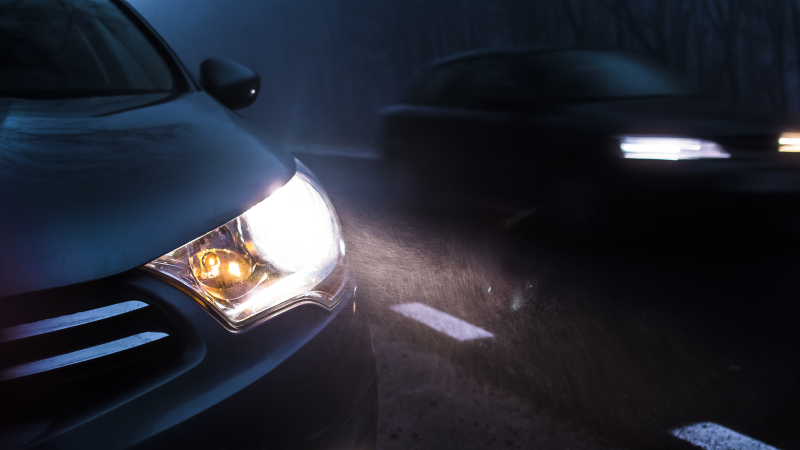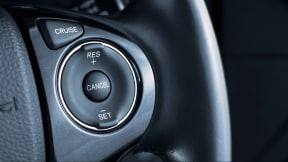High-beam headlights and when to use them

While high beams have the potential to illuminate a dark road, their blinding brilliance can also be a hazard to other drivers. Let’s learn more about how your high-beam headlights work, as well as how to use them safely.
Low vs. high beams
Your car’s headlights typically have a minimum of two modes: Low beams and high beams. Low-beam headlights can be considered the “default” setting since this is what will activate when you turn on your headlights. Low beams have a lower intensity of light and are angled a little bit lower to help keep focus on the road ahead of you.
High-beam headlights need to be activated in some way, though the exact mechanism and location of the high-beam switch may vary depending on your car. If you aren’t sure where your high-beam switch is, consulting your owner’s manual may help. High beams are more intensely bright and angled slightly higher than low beams so that they can light a greater distance.
High-beam headlight usage and the law
Just about every state has some type of regulation regarding the use of high beams in traffic. These laws differ from one state to another and it’s best to check your state laws for the most accurate information. As a rule of thumb, however, it’s typically safer to turn off your high-beam headlights when you’re within 500 feet of oncoming traffic so you don’t blind fellow motorists. For cars you’re following, it’s generally best to turn off high beams within a few hundred feet of them.
When should you use your high-beam headlights?
The main scenario where high beams are required is when the surrounding area has very little available light and there is limited traffic in either direction. Driving along a rural road at night, for instance, might be a good opportunity to deploy your high beams. Dark highways or roads without streetlights may be other instances where using your high beam headlights could be beneficial.
When not to use high beams
While high beams are designated as low-visibility headlights, there are certain low-visibility conditions where it’s still better to use your low beams, such as during fog, rain or snow. The higher angle of high beam headlights turns the fog, water and snow in the air into thousands of tiny little mirrors that can reflect into your eyes. This has the potential to greatly reduce your visibility.
Additionally, as noted above, it’s best to turn off your high beams when you’re within a certain distance of oncoming traffic or cars you’re following. High-traffic areas and urban environments that are generally lit up are other places to avoid engaging your high beams.
In summary
High beams provide much-needed extra light in certain low-visibility situations. However, high beams should be used wisely to avoid blinding other drivers with their brightness. Your high beams can also blind you if you try to use them in foggy, rainy or snowy weather, where the light could reflect off the particles in the air. Next time you hit the road, you’ll know when to use your high-beam headlights as well as when to switch back to low beams if it’s more appropriate.



